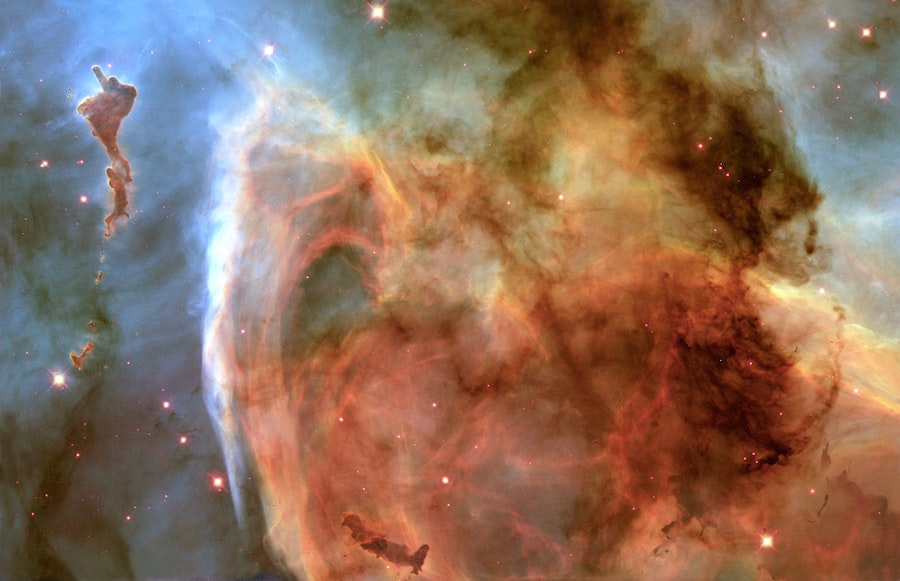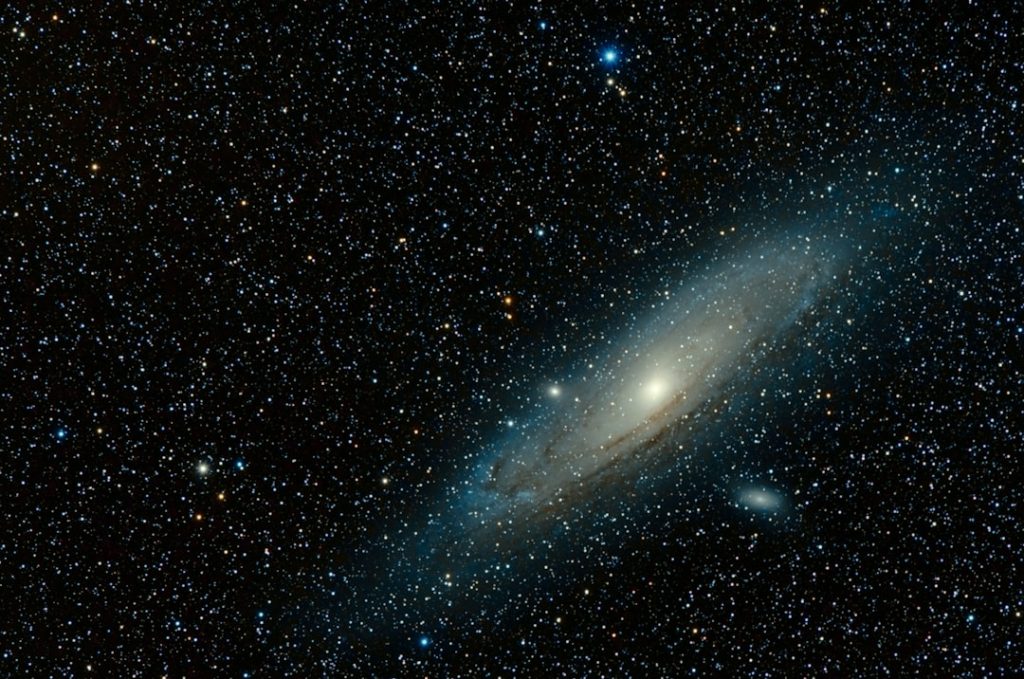The universe is an incomprehensibly vast expanse, a cosmic tapestry woven from the fabric of time and space. It is estimated to be around 13.8 billion years old, a timeline that stretches far beyond human comprehension. The observable universe alone spans approximately 93 billion light-years in diameter, containing billions of galaxies, each with millions or even billions of stars.
This staggering scale is difficult to grasp; for instance, the Milky Way galaxy, our home, is just one of an estimated two trillion galaxies in the observable universe. Each galaxy is a swirling mass of stars, gas, dust, and dark matter, creating a complex structure that scientists are still striving to understand. Within this vastness lies a multitude of celestial phenomena, from the smallest asteroids to the largest superclusters.
The sheer number of stars is mind-boggling; estimates suggest there are around 100 billion stars in the Milky Way alone. If we consider that there are likely more stars in the universe than grains of sand on all the beaches on Earth, it becomes evident that our planet occupies a minuscule fraction of the cosmic landscape. The distances between these celestial bodies are equally staggering; light from the nearest star system, Alpha Centauri, takes over four years to reach us, highlighting the immense scale of interstellar space.
This vastness not only challenges our understanding of physics but also ignites our imagination about what lies beyond our current knowledge.
Key Takeaways
- The universe is incredibly vast, with billions of galaxies and trillions of stars, each with the potential for hosting planets and life.
- Scientists are actively searching for signs of extraterrestrial life, using telescopes, probes, and other advanced technology to explore distant planets and moons.
- Black holes are one of the most mysterious and enigmatic phenomena in the universe, with their intense gravitational pull and ability to warp space and time.
- Stars form from clouds of gas and dust, and their evolution is driven by nuclear fusion, which powers them for billions of years before they eventually die.
- Dark matter and dark energy make up the majority of the universe, yet their true nature and properties remain largely unknown, posing a major challenge for astrophysicists.
- The concept of time travel and wormholes, while popular in science fiction, remains a theoretical possibility that has yet to be proven or realized.
- Exoplanets, or planets outside our solar system, are being discovered at an increasing rate, raising the possibility of finding Earth-like worlds with the potential for hosting life.
- The future of space exploration holds great promise, with plans for manned missions to Mars, the potential for asteroid mining, and the eventual colonization of other planets.
The Search for Extraterrestrial Life
The quest to find extraterrestrial life has captivated humanity for centuries, evolving from myth and speculation into a rigorous scientific endeavor. The search encompasses various approaches, including astrobiology, which examines the potential for life in extreme environments on Earth as analogs for extraterrestrial conditions. Scientists have identified several celestial bodies within our solar system that may harbor life or have once supported it.
For example, Mars has been a focal point due to its past presence of liquid water and evidence of ancient riverbeds. Missions like NASA’s Perseverance rover aim to uncover signs of past microbial life by analyzing Martian soil and rock samples. Beyond our solar system, the search extends to exoplanets—planets orbiting stars outside our solar system.
The Kepler Space Telescope has discovered thousands of these worlds, many located in their star’s habitable zone, where conditions might be right for liquid water to exist. The discovery of exoplanets has revolutionized our understanding of planetary systems and their potential for life. For instance, Proxima Centauri b, an Earth-sized exoplanet orbiting the closest star to our solar system, has sparked interest due to its location within the habitable zone.
The ongoing study of these distant worlds raises profound questions about the nature of life itself and whether we are alone in the universe.
Black Holes: The Cosmic Enigma

Black holes represent one of the most intriguing and perplexing phenomena in astrophysics. Formed from the remnants of massive stars that have undergone gravitational collapse, black holes possess gravitational fields so strong that nothing—not even light—can escape their grasp. This characteristic gives them their name and makes them invisible against the backdrop of space.
The boundary surrounding a black hole is known as the event horizon; once crossed, all information about matter that falls into a black hole is lost to the outside universe, leading to debates about the fundamental laws of physics. The study of black holes has revealed fascinating insights into the nature of space and time. For instance, the concept of singularity—a point at which gravitational forces compress matter to infinite density—challenges our understanding of physics as we know it.
The Event Horizon Telescope’s groundbreaking imaging of the supermassive black hole at the center of the galaxy M87 provided visual evidence supporting theories about their existence and behavior. Furthermore, black holes are not merely cosmic vacuum cleaners; they play a crucial role in galaxy formation and evolution by influencing star formation rates and distributing matter throughout galaxies.
The Formation and Evolution of Stars
| Stage | Description |
|---|---|
| Protostar | The initial stage where a dense core within a molecular cloud collapses under its own gravity. |
| Main Sequence | The stage where a star is fusing hydrogen into helium in its core, producing energy and balancing gravitational forces. |
| Red Giant | When a star runs out of hydrogen in its core, it expands and becomes a red giant, fusing helium into heavier elements. |
| Planetary Nebula | At the end of a star’s life, it sheds its outer layers, creating a beautiful nebula of gas and dust. |
| White Dwarf | The remaining core of a low to medium mass star, which slowly cools down over billions of years. |
Stars are born from vast clouds of gas and dust in space, primarily composed of hydrogen and helium. This process begins when regions within these clouds collapse under their own gravity, leading to an increase in temperature and pressure at the core. As conditions become favorable, nuclear fusion ignites, marking the birth of a new star.
This stellar lifecycle is not uniform; it varies significantly based on a star’s mass. Massive stars burn brightly and quickly, exhausting their nuclear fuel in just a few million years, while smaller stars like our Sun can shine for billions of years. As stars evolve, they undergo various stages that can lead to spectacular phenomena.
For example, when a massive star exhausts its nuclear fuel, it may explode in a supernova—a cataclysmic event that disperses elements into space and can trigger the formation of new stars. The remnants left behind can form neutron stars or black holes, depending on the original star’s mass. In contrast, smaller stars like our Sun will eventually shed their outer layers and become white dwarfs after passing through the red giant phase.
This process enriches the interstellar medium with heavy elements necessary for planet formation and life as we know it.
The Mysteries of Dark Matter and Dark Energy
Dark matter and dark energy are two of the most enigmatic components of the universe, constituting approximately 95% of its total mass-energy content yet remaining largely undetectable by conventional means. Dark matter is thought to be responsible for the gravitational effects observed in galaxies and galaxy clusters that cannot be explained by visible matter alone. For instance, observations of galaxy rotation curves reveal that stars at the edges of galaxies rotate at speeds that suggest there is more mass present than what we can see—implying a significant amount of unseen dark matter.
On the other hand, dark energy is believed to be driving the accelerated expansion of the universe. Discovered through observations of distant supernovae in the late 1990s, dark energy poses profound questions about the fate of the universe itself. While its exact nature remains elusive, it is theorized to exert a repulsive force that counteracts gravity on cosmic scales.
Understanding these two phenomena is crucial for unraveling the fundamental workings of the universe and could lead to groundbreaking discoveries about its origin and ultimate fate.
The Possibility of Time Travel and Wormholes

The concept of time travel has long fascinated scientists and science fiction enthusiasts alike. While time travel remains speculative, theories rooted in Einstein’s general relativity suggest that it may not be entirely out of reach. One such theory involves wormholes—hypothetical passages through spacetime that could create shortcuts between distant points in the universe.
If traversable wormholes exist, they could potentially allow for time travel by connecting different moments in time as well as different locations in space. However, several challenges must be addressed before time travel could become a reality. For instance, maintaining stability within a wormhole would require exotic matter with negative energy density—something that has yet to be discovered or created in sufficient quantities.
Additionally, paradoxes such as the famous “grandfather paradox,” where a time traveler could potentially prevent their own existence by altering past events, raise philosophical questions about causality and free will. Despite these challenges, research into theoretical physics continues to explore these concepts, pushing the boundaries of our understanding of time and space.
Exploring Exoplanets and Their Potential for Life
The exploration of exoplanets has emerged as one of the most exciting frontiers in modern astronomy. With advancements in technology and observational techniques, astronomers have identified thousands of exoplanets across various star systems. These discoveries have expanded our understanding of planetary diversity and raised intriguing questions about their potential habitability.
For instance, some exoplanets reside within their star’s habitable zone—an area where conditions may allow for liquid water to exist on their surfaces. The study of exoplanets involves various methods such as transit photometry and radial velocity measurements to detect their presence and characterize their atmospheres. Instruments like NASA’s James Webb Space Telescope are poised to revolutionize this field by providing unprecedented insights into exoplanet atmospheres and potential biosignatures—chemical indicators that could suggest the presence of life.
For example, researchers are particularly interested in studying exoplanets like TRAPPIST-1e and LHS 1140 b due to their Earth-like characteristics and proximity to Earth.
The Future of Space Exploration and Colonization
As humanity stands on the brink of a new era in space exploration, ambitious plans for colonization and interplanetary travel are taking shape. Organizations like NASA and private companies such as SpaceX are spearheading efforts to establish a human presence on Mars within this decade. The challenges are immense; they include developing sustainable life support systems, ensuring safe transportation across vast distances, and addressing health concerns related to long-duration spaceflight.
Beyond Mars, discussions about colonizing other celestial bodies such as moons like Europa or Titan have gained traction due to their potential for harboring life or resources necessary for human survival. The concept of building self-sustaining habitats on these worlds raises questions about how humanity will adapt to new environments while preserving its identity and culture. As technology advances and our understanding deepens, humanity’s journey into space may not only redefine our place in the cosmos but also challenge us to rethink what it means to be human in an ever-expanding universe.


